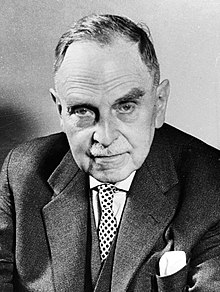Otto Hahn was a German chemist recognized for his innovative efforts in radiochemistry. His most significant accomplishment was the identification of nuclear fission, an occurrence that changed our perception of atomic energy and prompted the establishment of both nuclear power and atomic bombs.
Early Life and Education
He was born in Frankfurt am Main on March 8, 1879, as an offspring of four siblings. The father, a trader by profession and owner of ships since childhood always motivated his curiosity towards anything related to knowledge. He attended a public high school known as Goethe-Gymnasium situated in Frankfurt where it was during this time when he nurtured his interest in science more specifically chemistry.
After finishing his secondary studies, in 1897 Hahn joined the University of Marburg majoring in Chemistry. He shifted later on to University of Munich where he was under the guidance by Adolf von Baeyer, who was a known chemist. While working with Baeyer, they did an investigation about thorium and some of its properties relating to radioactivity.
Research and Discoveries
Hahn relocated from Berlin back to Marburg in 1905 to collaborate with a physicist named Emil Fischer. He retained this line of work at the Kaiser Wilhelm Institute for Chemistry by continuing research on radioactive elements. In addition, he joined hands with physicist Lise Meitner to make some great contributions to radiochemistry.
One of Hahn’s great feats includes unveiling radioactinium (1907) as well as mesothorium (1908) which helped lay down the concept of radioactive decay chains where one radioactive element would change into another. He also came up with fresh means through which radioactive elements could be separated, vital for future studies in this area.
He was then appointed head of the Radiochemistry Department, at Kaiser Wilhelm Institute for Chemistry in 1913. During the first war, he was busy serving as a gas warfare expert, while after that he went back to radiochemistry research.
Discovery Of Nuclear Fission
In 1934, Enrico Fermi an Italian physicist bombarded uranium with neutrons to produce heavier elements. Hahn and Meitner became interested in Fermi`s experimentations which made them to further investigate on these matters. They bombarded uranium using neutrons and observed that a new element was formed called barium.
The new transuranic element which they thought they created was not there at all in the first place according to the results of their careful study on what actually happened. It was a process of splitting the uranium nucleus into two smaller nuclei which resulted in the production of barium, this phenomena became known as nuclear fission.
Their findings were published in 1939. Other scientists were quick to verify these experiments and the significance of nuclear fission became apparent. This discovery led to the construction of nuclear reactors and bombs.
Recognition And Legacy
Otto Hahn made significant contributions to science and received many awards for it. In 1944 he was awarded a Nobel Prize in Chemistry for discovering nuclear fission Moreover, he served as the president of the Max Planck Society from 1946 until 1960.
His work had a great impact around the globe. The discovery of nuclear fission opened new avenues for energy production and scientific research. However, it also led to the production of nuclear weapons which have caused much suffering on earth. Despite having developed nuclear bombs himself, Hahn bitterly complained about their use advocating peaceful use of atomic power.
He died on July 28, 1968, at the age of 89 years. As the founder of atomic physics, his legacy still motivates many scientists across the world.

